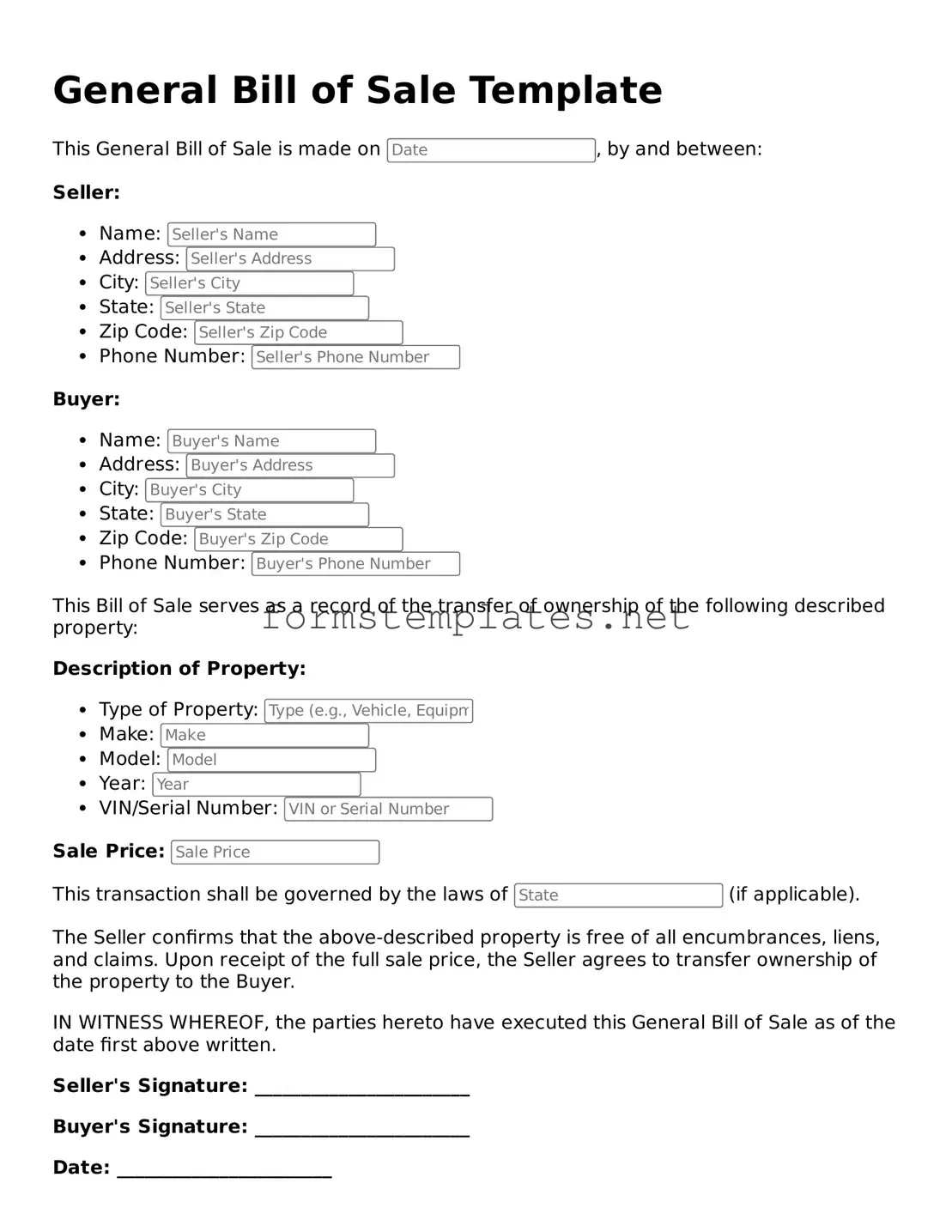Attorney-Verified General Bill of Sale Form
A General Bill of Sale form is a legal document that serves as a receipt for the transfer of ownership of personal property from one party to another. This form outlines the details of the transaction, including the items sold, the sale price, and the date of transfer. Utilizing a General Bill of Sale can help protect both the buyer and seller by providing clear evidence of the sale.
Open Editor Now
